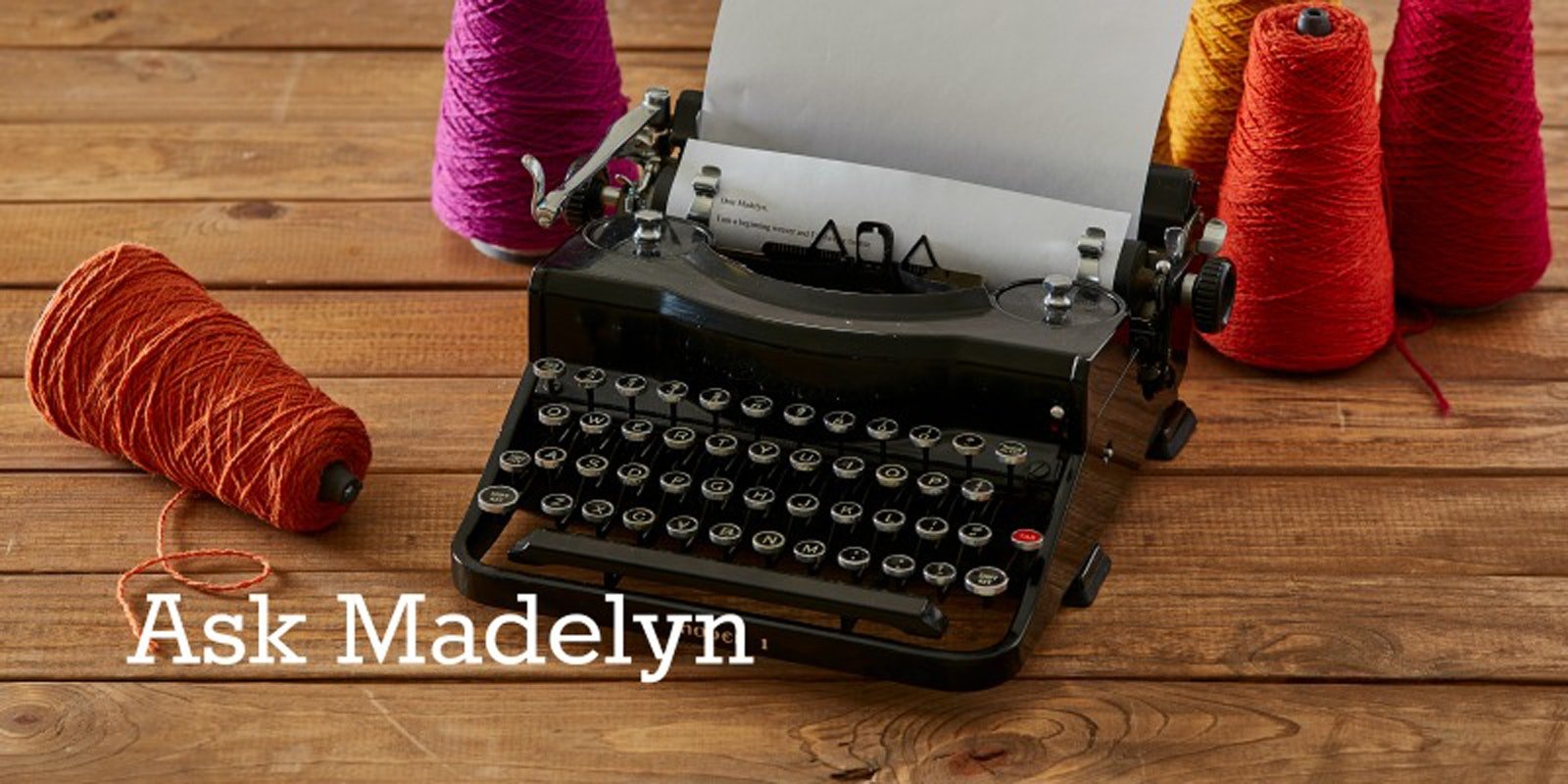Hi Madelyn!
I read in an Ask Madelyn that you don’t sample separately from your project; you just put on extra warp and sample for sett before you start. What happens if you have to change your sett a lot either up or down? Do the edges tighten or loosen up? Do you ever have to take off or add ends for the correct width? How do you do that? How do you change your sett?
Anna
Hi Anna!
This is true. I almost always do any needed sampling on the warp I’ll use for the intended project. I have to know some important factors first, though. Usually, the structure for the project is either going to be a balanced weave (plain weave itself, lace, twill, or similar), have a plain-weave base (supplementary pattern weft with a plain-weave ground cloth), or it’s going to be warp-faced, weft-faced, or a doubleweave. I can guess the general range of setts for the intended yarn by first knowing that information and then consulting the Master Yarn Chart, which gives the sett for plain weave using almost every yarn available to handweavers. Knowing the plain-weave sett, I can choose setts that are closer or more open (or double for doubleweave). I also have a library of projects in Handwoven magazine that I can consult, looking at all the setts for similar projects. My estimated setts are therefore very close.
Usually, the exact width for projects I weave is not critical. If it were, I’d plan for a wider warp than I needed (using my estimated sett) and drop off threads if it is too wide. (These would not be a great many threads, and I actually can’t remember it ever happening.) When I’ve woven a sample, I cut it off the loom (weaving in a stick method to avoid wasting yarn), and finish the sample the way I will finish the intended project. Then I can tell what the precise draw-in, draw-up, and shrinkage will really be. And one note: when you weave a sample that is much narrower than the project, it isn’t really giving you the same information as a fabric woven at the actual size. You might not be able to beat the wider piece the way you did the sample, for one thing, and the sample might shrink differently from the larger fabric.
I would definitely not enjoy adding ends to a warp I’ve already beamed, but if I had to, I would add a small warp chain on each side of the beamed warp and weight the chains. But I’ve never had to do that. I’ve only rarely had to drop ends. There is so much information about sett available that unless the yarn and project idea is really unique, your guesses will be close enough to allow resleying without affecting width dramatically.
To resley, I usually work with the original reed (changing something like 2 per dent to 2/2/3 or 2/2/1, for example). For a warp that will end up being wider, I determine the new width and move the threads individually (leaving the reed in place) starting at one edge as far away from the center as the new width requires. When I get to the center, I usually take the remaining threads out of the reed and continue to the other side. For warps that need to be narrower, I work from the center out to each side (leaving threads in their dents until I reach them). For changes that would require a different reed (from 1/dent in a 4-dent reed to 1/dent in a 6-dent reed for example), I remove the first reed and sley the new reed as usual.
It usually doesn’t matter if the warp is a bit wider or narrower on the beam than in the reed. (This difference is usually not extreme, but even then, I think all would be fine except with very unforgiving yarns such as linen.)
An important aspect of my warping world is that I am a believer in putting on longer warps than I think I’ll need (usually as much as twice as long). When you weave that first sample, you often get an idea for colors and treadling orders that you want to try (maybe some that are better than your original plan). You’ll get more ideas as you weave your intended project. It’s a joy to have enough warp to try them out.
Madelyn

